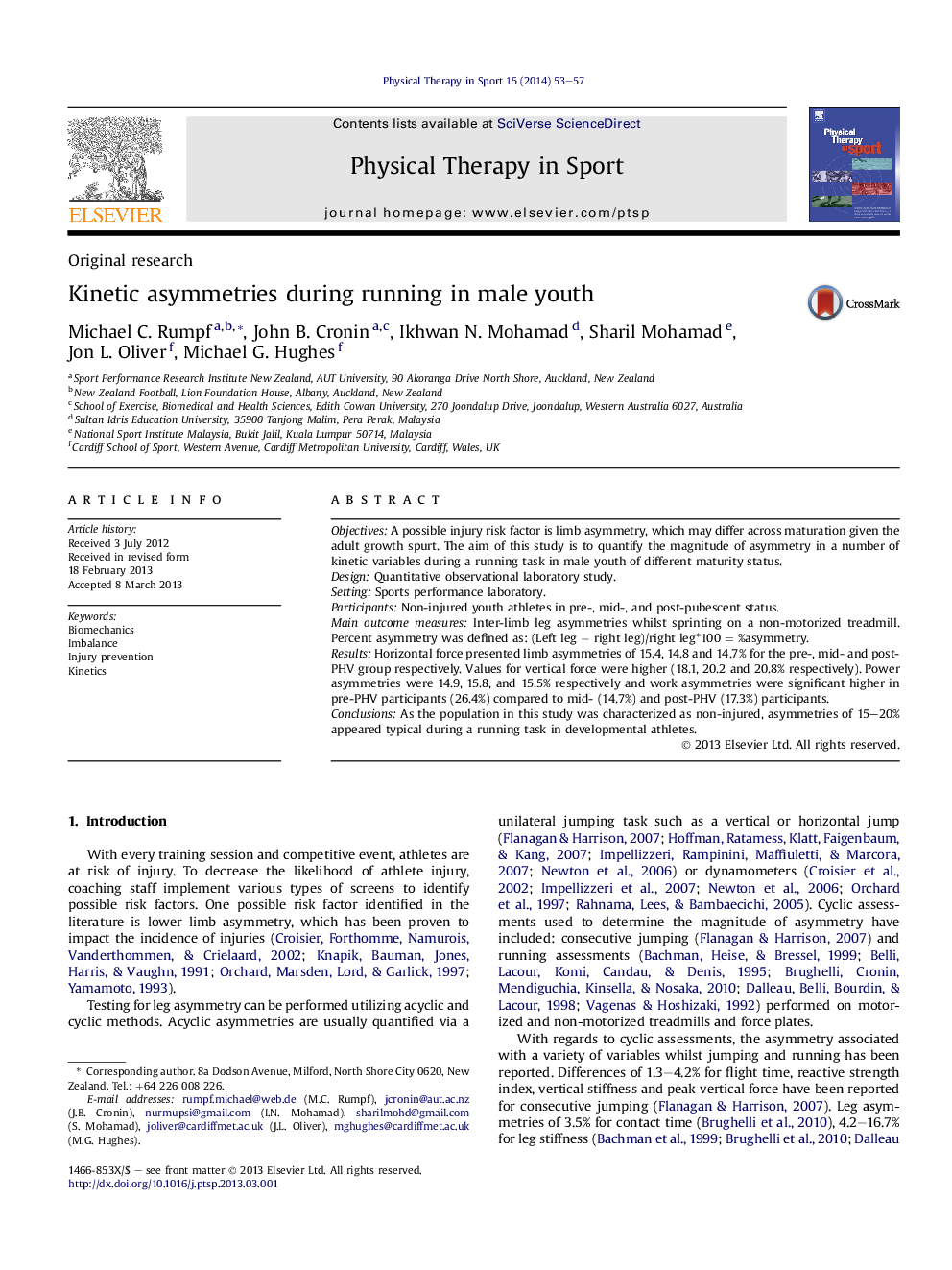| Article ID | Journal | Published Year | Pages | File Type |
|---|---|---|---|---|
| 2703711 | Physical Therapy in Sport | 2014 | 5 Pages |
ObjectivesA possible injury risk factor is limb asymmetry, which may differ across maturation given the adult growth spurt. The aim of this study is to quantify the magnitude of asymmetry in a number of kinetic variables during a running task in male youth of different maturity status.DesignQuantitative observational laboratory study.SettingSports performance laboratory.ParticipantsNon-injured youth athletes in pre-, mid-, and post-pubescent status.Main outcome measuresInter-limb leg asymmetries whilst sprinting on a non-motorized treadmill. Percent asymmetry was defined as: (Left leg − right leg)/right leg*100 = %asymmetry.ResultsHorizontal force presented limb asymmetries of 15.4, 14.8 and 14.7% for the pre-, mid- and post-PHV group respectively. Values for vertical force were higher (18.1, 20.2 and 20.8% respectively). Power asymmetries were 14.9, 15.8, and 15.5% respectively and work asymmetries were significant higher in pre-PHV participants (26.4%) compared to mid- (14.7%) and post-PHV (17.3%) participants.ConclusionsAs the population in this study was characterized as non-injured, asymmetries of 15–20% appeared typical during a running task in developmental athletes.
